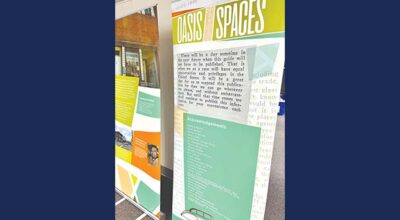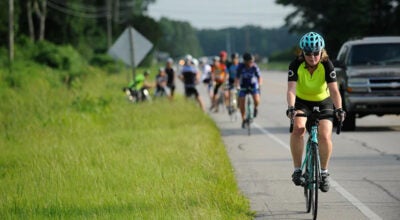Scotts show documentary
Published 1:14 am Saturday, June 18, 2011
The award-winning filmmakers behind the Refuge documentary series, Blake and Emily Scott, were at the Columbia Theater on Thursday night discussing the making of the series that features wildlife around eastern North Carolina.
Blake Scott said the “Refuge: The Series” focuses on national wildlife refuges in eastern North Carolina, including Mattamuskeet, Pocosin Lakes, Roanoke River, Pea Island and Alligator River.
“Though we’ve filmed and produced five feature wildlife documentaries in the Refuge series, we took portions of each film and put them together for the show last night,” Blake Scott said Friday.
The Scotts’ film and production studio, STRS Productions Inc. is in Washington.
“Along with their stunning images of the landscape and wildlife of eastern North Carolina, the Refuge series films remind us of the vital role national wildlife refuges play in habitat conservation,” Scott said. “Refuges across America protect millions of acres of wilderness and are singularly dedicated to preserving our country’s awesome natural heritage.”
At the screening, people viewed rare footage of male black bears fight over a mate, as well as seeing the softer side of wildlife by viewing hatchling sea turtles making their way to the ocean.
Annette Gibbs, facility coordinator of the Columbia Theater, noted the theater is a facility of The Partnership for the Sounds, a nonprofit organization that promotes stewardship and sustainable development in the Albemarle-Pamlico region.
“I think it’s a great idea what they have done,” she said, referring to the Scotts’ productions of the Refuge series. “They took the best parts of each documentary and combined them for (Thursday) night’s show.”
Gibbs said the audience liked what it saw and experienced as the footage unfolded before their eyes.
“People were just fascinated with the footage of what the program had to offer,” she said. “People asked Blake lots of questions about how they filmed the animals and what it was like being out there, like which one was the most dangerous spot they filmed.
“It was great in the sense it was educational because it gave people an up-close and personal look at what’s out there. Or, what’s out here, rather.”
Gibbs said the audience wanted the Scotts to return to the theater and show more footage.
“Several people equated it to the Discovery Channel because it was so full of wildlife and informative,” Gibbs said.
Scott said not only did the audience get to see some of the best highlights of the Refuge series, but it also heard about the excitement of filming the documentaries.
“We even had two of our cameramen with us to speak to the audience, as well as answer any questions about filming,” he said. “The audience was also among the first to see previews of our newest films in the series about the Roanoke River and Alligator River refuges.”
Scott joked by saying, “When people ask me what Roanoke River refuge is about, I tell them it’s a horror film because some of those snakes are massive. But then again, some people love reptiles.”
Scott said the show began at 7 p.m., but he, his wife and others involved with producing the series didn’t leave until late into the night because people were enamored with their work and wanted to know more.
“It’s truly flattering,” he said, “knowing that what we’ve done has sparked this much interest.”
To find out more about “Refuge: The Series,” log onto www.refugewildlife.com.





